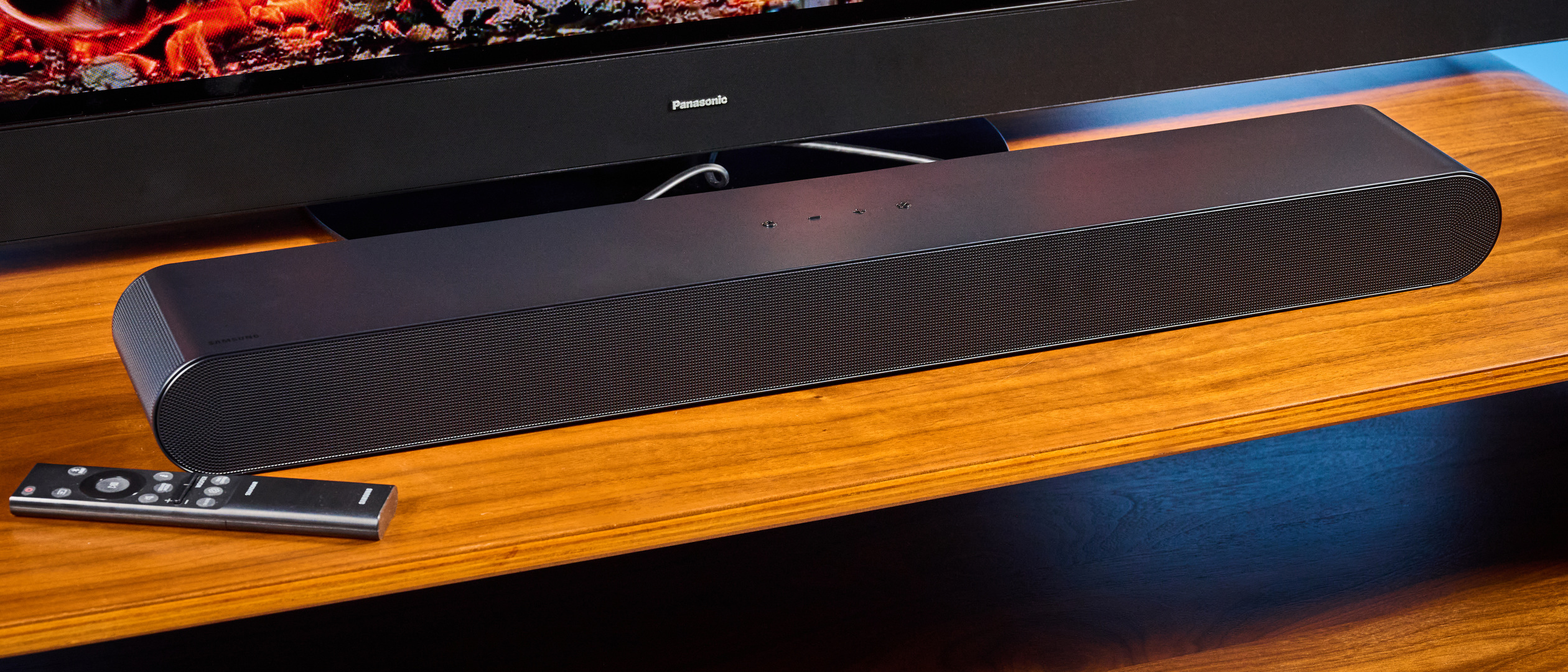Tom's Guide Verdict
There’s a lot to like on the S60D, but that doesn’t mean it’s perfect. The sound is good, and it’s beyond easy to use with the Smart Things app. However, if you’ve got a non-Samsung TV, it’s probably not worth it. As with other Samsung soundbars I’ve tested, the Samsung HW-S60D soundbar needs a Samsung TV for its flagship features. Things like Wireless Dolby Atmos and enhanced dialogue are restricted to Samsung users.
Pros
- +
Easy setup
- +
An improvement over TV speakers
- +
Instant Bluetooth connection with Smart Things app
- +
Sound is good, but…
Cons
- -
…Not mind-blowing
- -
Flagship features limited to Samsung TVs
- -
Dialogue can be muffled
Why you can trust Tom's Guide
Samsung’s HW-S60D could be one of the best soundbars… but only if you have a Samsung TV. While the S60D has a range of premium features that make its $349 MSRP much more appealing, said features are restricted to Samsung TVs.
Features like Wireless Dolby Atmos and Active Voice Analyzer are unfortunately only available on compatible Samsung TVs, so I was unable to experience these while testing on my Panasonic.
That’s not to say the S60D is a bad soundbar — if you’ve got a Samsung TV, it could be a great way to upgrade from the built-in TV speakers for a relatively affordable price. However, if you’ve got any other brand (or an older Samsung model), then you’d be better off with something else. Don’t worry, I’ll go through all the details in my Samsung HW-S60D soundbar review.
Samsung S60D soundbar review: Cheat sheet
- What is it? A simple soundbar with a 5.0 channel setup
- Who is it for? If you have a Samsung TV and want a cheap-ish step up from your TV speakers? Then the S60D is for you
- What does it cost? $349 / £359
- What do we like? The sound is good, and there’s a range of listening modes
- What don’t we like? The sound is merely good, not great, and all of the best features are restricted to Samsung TVs
Samsung S60D soundbar review: Specs
Samsung S60D soundbar review: Price & availability
The Samsung S60D is $347 on Amazon U.S., but its MSRP on Samsung U.S. is $349.
The S60D has an RRP of £359 in the U.K. but is available for just £279 on Amazon U.K.. £279 is a much better price for this soundbar — I think £359 is pretty steep considering you can get the Polk Signa S4 soundbar and subwoofer for just £329 (a 3.1.2 channel setup as opposed to the S60D’s 5.0).
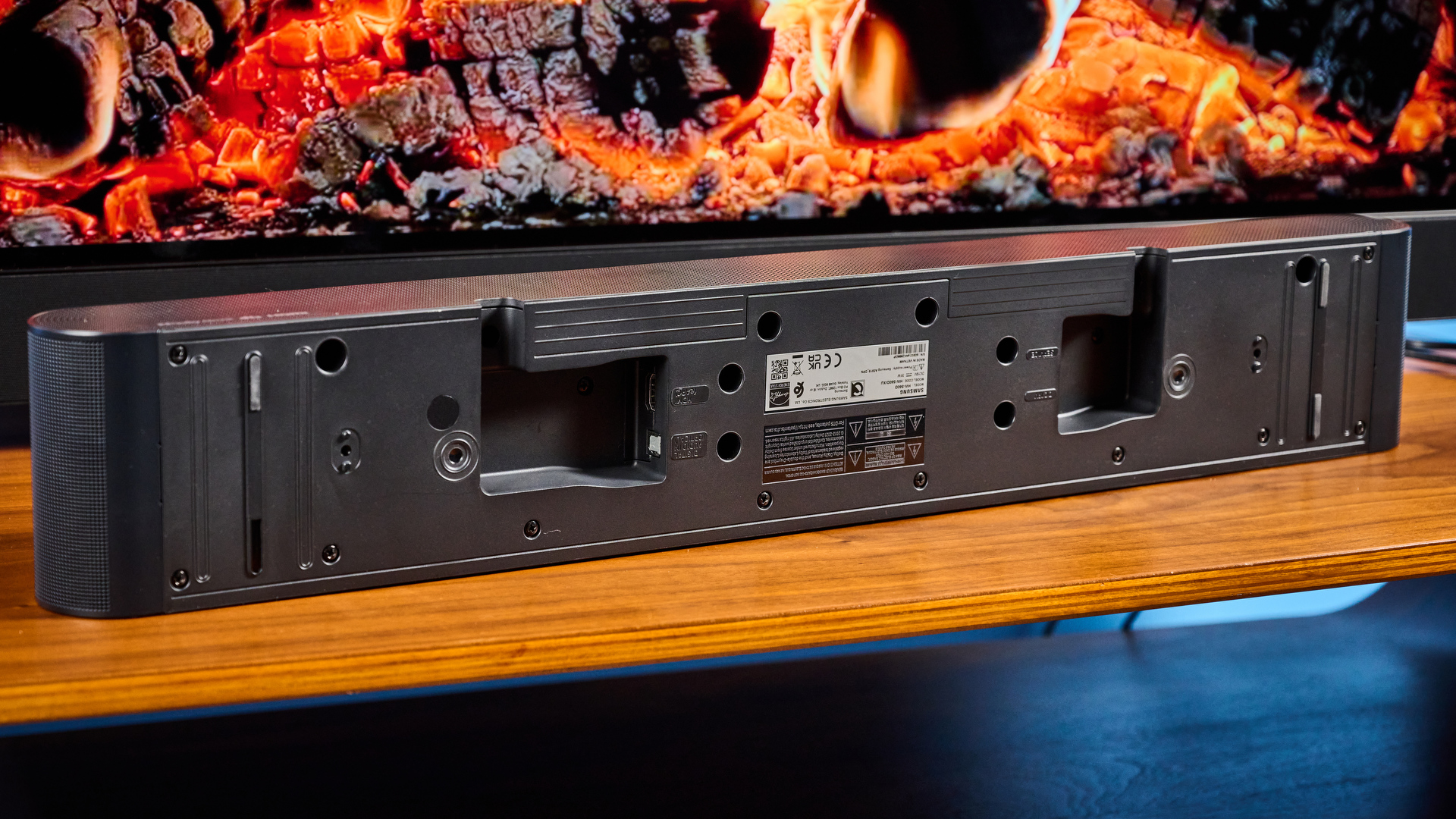
If you’re a home theater newbie looking for your first home setup, I wholeheartedly recommend the Polk Signa S4. It’s got a subwoofer and soundbar for just $399. The Signa S4 is my go-to recommendation for beginners, as it’s relatively affordable and sounds just as good as some of the $500+ options.
Samsung S60D soundbar review: Design & controls
- Looks like every other soundbar
- Lovely remote control with easy-to-use buttons
- On-bar controls too
Honestly, there’s not really much to say about the S60D’s appearance. It looks like a soundbar. They all look the same. Still, there’s nothing inherently negative about that — there’s a style, and it works. The S60D is quite inconspicuous, but it’s deeper than the S801D’s tiny 1.5-inch depth. It’s not one if you need a super slim soundbar — the Polk Signa S4 I praised earlier could help you out there at just 2.4 inches deep.
Get instant access to breaking news, the hottest reviews, great deals and helpful tips.

Although the S60D is unassuming in appearance, it’s very easy to set up. I only had to plug it in and connect with an HDMI cable to my Panasonic MZ1500 4K OLED and it was ready to go.
I love the on-bar buttons: there’s volume, mic, and an on/off button. You don’t need to use these, though: the S60D comes with a lovely remote control that has a range of features, including channel level and listening modes. The Samsung remote is much better than the Bose remote, which I find lacking in features.
Samsung S60D soundbar review: App
- Samsung’s Smart Things app
- Very easy to control EQs and listening modes
- Seamless Bluetooth connection
As with other Samsung soundbars, the S60D uses the Smart Things app. This is one of the best smart home apps I’ve ever used. I’m already familiar with it as I own a Samsung washing machine, and I can’t lie — it’s nice to see my virtual home fill up with more products. You can name each product to whatever you like (Soundbar McSoundbarface, anyone?).
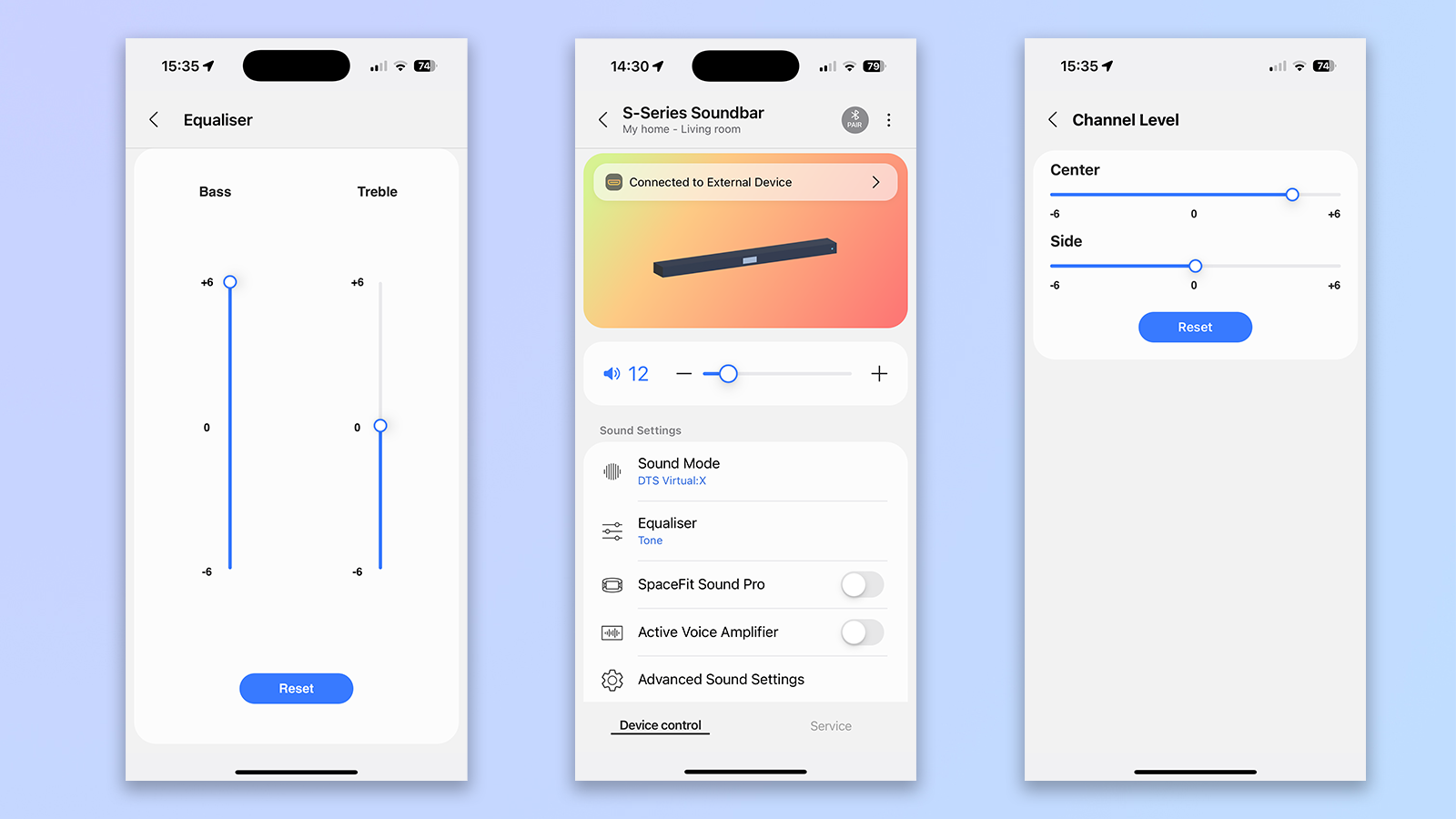
As you can see, there’s a range of playback modes in the Smart Things app. I found that DTS Virtual X sounded the best across a range of movies and TV shows. You can even increase center and surround channel speakers to imitate true surround sound (but obviously it isn’t ‘true’ surround as there’s no Dolby Atmos on this soundbar, and there aren’t enough channels).
Samsung S60D soundbar review: Features
- Flagship features limited to Samsung TVs
- Sound modes include imitation Dolby Atmos
- Could benefit from some dialogue EQs
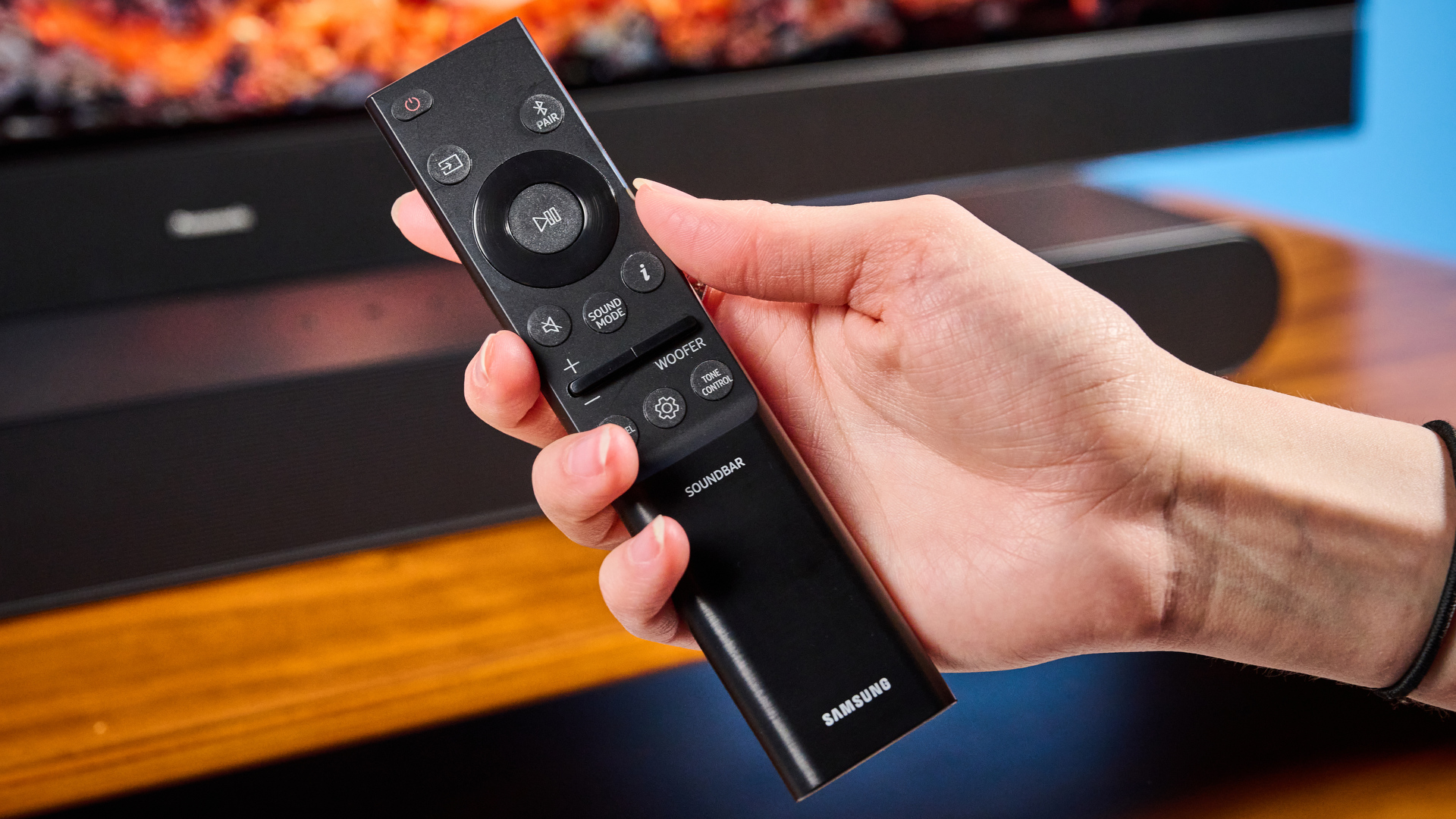
As with the Samsung S801D Ultra Slim soundbar I recently tested, the S60D’s flagship features are restricted to Samsung TVs. As I was testing on our Panasonic testing TV, unfortunately, these features were lost to me. I think this is a fair criticism, as not everyone has a Samsung TV, therefore virtually limiting users of this soundbar to Samsung loyalists.
It’s a shame that I couldn’t experience ‘Wireless Dolby Atmos’ as this was the mode I was most excited about. However, the DTS Virtual X listening mode made a valiant effort to create a Dolby Atmos experience. The S60D claims it has Dolby Atmos, but it doesn't really. The upfiring channel speakers don’t perform adeptly enough to create an immersive experience, and Wireless Dolby Atmos is limited to Samsung TVs, as I just mentioned.

Of course you can still use it (and enjoy it, as I did), but it’s a shame that these major features are restricted. I’m sure that the room calibration feature, Space Fit Sound Pro, works a treat. I just didn’t get the opportunity to experience it in all its glory.
There are still a range of sound modes, though, including ‘Standard’, ‘Game’, ‘Music’ and ‘DTS Virtual X’. I found that DTS Virtual X was pretty good at tricking my brain into thinking I was listening with true Dolby Atmos, as I’ll get into below. As I watched movies with this soundbar, I actually felt like I had a full surround setup.
However, I do think the S60D could benefit from a dialogue enhancement sound mode. There were a few moments in ‘A Complete Unknown’ where I couldn’t hear anything. That’s definitely to do with the acting and sound mixing as well (the S60D isn’t completely guilty), but is something to note if you struggle with hearing already.
Samsung S60D soundbar review: Sound quality
- Muffled dialogue in some movies
- Surprisingly expansive for a 5.0 channel soundbar
- Good sound quality, but not mind-blowing

As I do with all soundbars I test, I watched various movies and TV shows, and listened to music. I watched ‘Top Gun: Maverick’, ‘The Wild Robot’, ‘A Complete Unknown’ on 4K UHD Blu-Ray, ‘Stranger Things’ on Netflix, and a range of music via Qobuz. Before we start, a word of warning: do not use ‘Standard’ audio mode, as it’s really tinny. Like, really tinny. Just skip immediately to DTS Virtual X.
Movies
As always, I watched ‘Top Gun: Maverick’ on 4K Blu-Ray. To see how immersive it could be, I upped the channel speakers to attempt Dolby Atmos. However, this didn’t really improve the surround sound experience. As this soundbar doesn’t have surround sound, I wasn’t expecting it to mimic true 360° audio anyway.
The high-frequency sounds like metal clinking and ropes swishing were a little lost with the bassy soundtrack. The jet engine sounds overpowered these smaller sound effects — I’d say the audio in this specific Top Gun scene was comparable to the Bose Smart Soundbar ($499). The louder parts of the soundtrack fell a little flat, but it’s easily overlookable. It’s good, but not mind-blowing.
Next, I watched ‘A Complete Unknown’. The singing sounded good, but there wasn’t much clarity in the vocals. Dialogue scenes were a little overpowered by the soundtrack. I thought the semi-mumbled dialogue could be the problem, but I was able to hear this on the Samsung S801D. Also, I feel like loads of movies nowadays have mostly muted speech. The Samsung 60D lacks the AI voice-enhancing tech I’ve seen on other soundbars like the Polk Signa S4’s 3 ‘voice adjust’ modes.
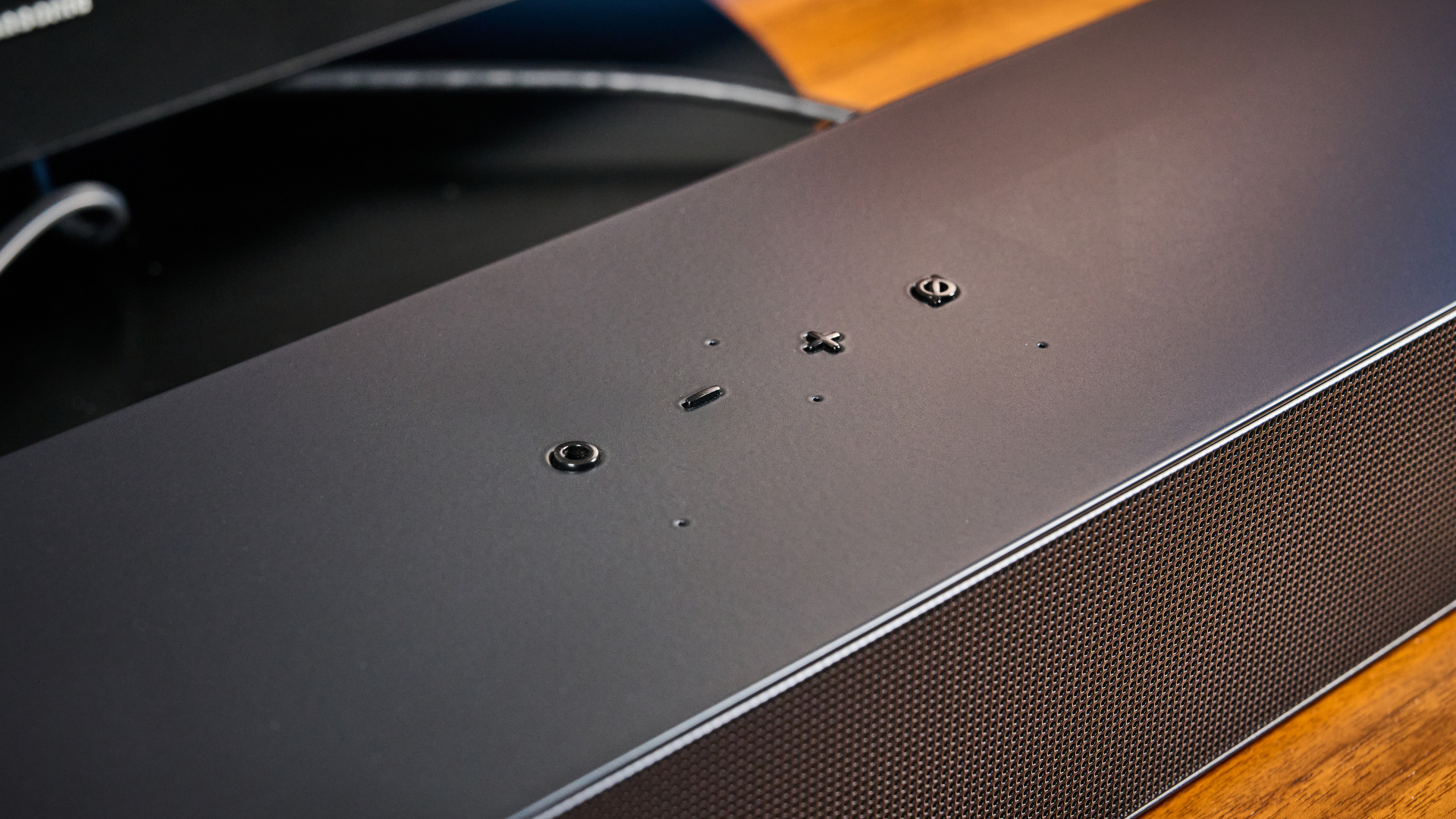
Samsung does have an Adaptive Sound mode for enhanced audio, but, again, this is restricted to Samsung TVs, which is a major disappointment.
Last, I watched ‘The Wild Robot’. There’s one particular scene that’s excellent for immersive audio, where the goose character is swimming for the first time. I use this always use this scene to test soundbars — the sound mixing here is excellent. Splashes in seemingly 360°, feathers rustling, and plenty of underwater bubble sounds.
Even though the S60D doesn’t have Dolby Atmos, the swimming scene sounded immersive and expansive. I felt like I could have been immersed in the water myself. However, it’s worth noting that the water sounds weren’t as clear as on the Samsung D801D Ultra Slim soundbar.
TV
To test TV, I watched ‘Stranger Things’. Again, some dialogue was a bit quiet, mostly the gruffer actors like David Harbour, but I could hear all of the kids’ speech clearly. In a few scenes, I felt a little overwhelmed; the dialogue was sibilance-heavy yet muffled at the same time. However, in general, the audio was good. Not excellent, but good, and way, way better than TV speakers ever could be.
In the scene where Will is hiding from the monster, I felt immersed in his fear, and could hear the hissing lightbulb and his rapid breathing clearly. It was just in louder school scenes that the ambient noise overpowered the dialogue a little.
‘Music’ mode did enhance the dialogue a bit, but it lost some of the DTS Virtual X mode’s immersive experience. It’s a toss up: clear dialogue, or more surround immersion? I settled for the surround sound.
Music
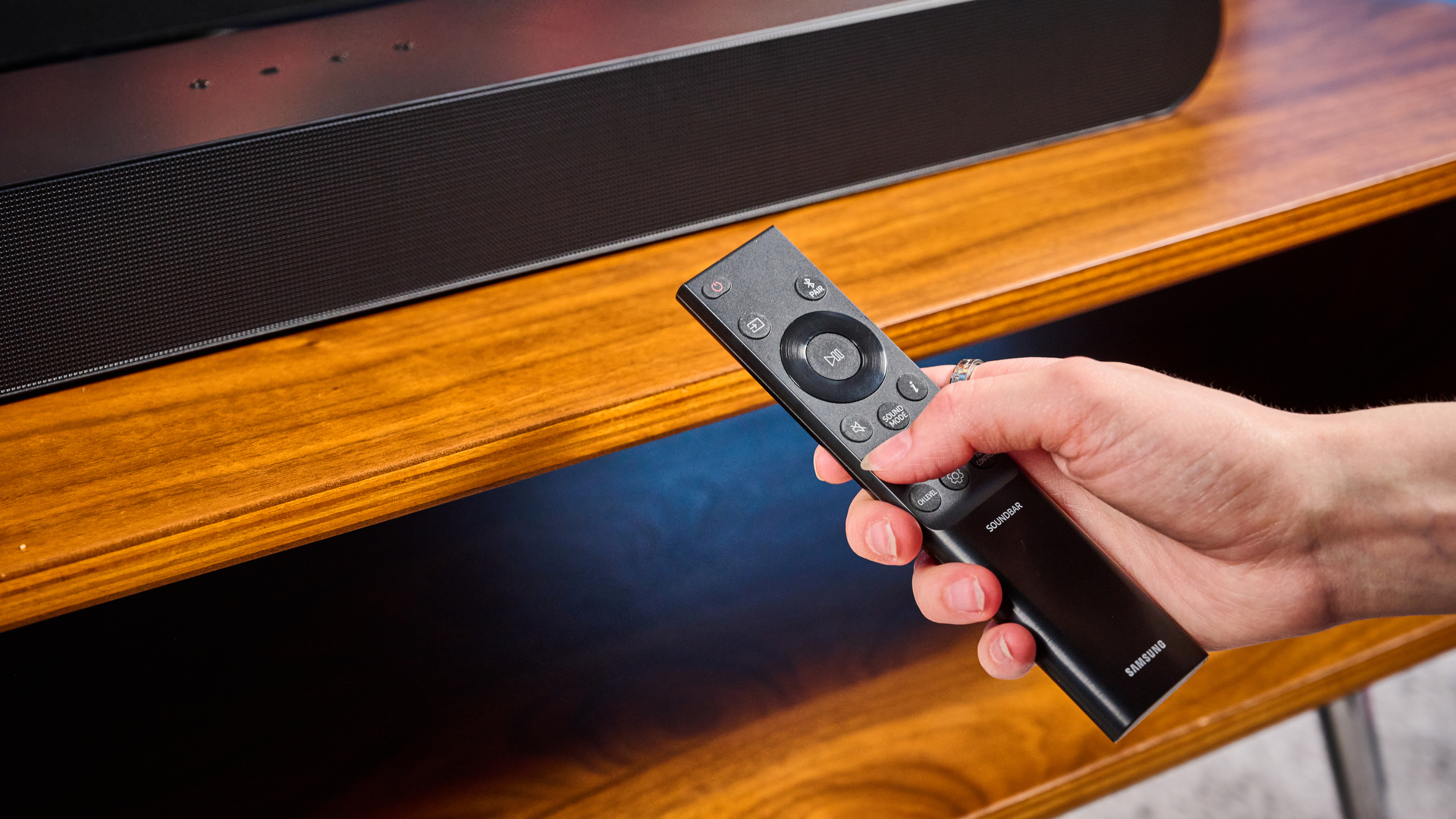
Just as with the Samsung S801D soundbar, listening to music on the S60D soundbar was merely fine. It’s not amazing, and it won’t impress anyone really serious about the music. But does it do the trick? Sure, it’s better than an Alexa or Google Home, but if you want a good speaker, you’ll need to buy a speaker (or two).
I listened to ‘Let It Happen’ by Tame Impala. While the synth mids and vocals were clear and powerful, the percussion and bass were both extremely lacking and disappointing. Next, I listened to ‘Moaning Lisa Smile’ by Wolf Alice, hoping to get some oomph. The heavy, grungy chorus was loud and effectual, but again, that percussion was rather tinny. Even so, I had a good time listening to music on this soundbar, but it wouldn’t be the first thing I reached for for a party.
Samsung S60D soundbar review: Verdict

If you’ve got a Samsung TV, you’ll likely have a better experience than me. However, it’s worth criticising the Samsung ecosystem for barring the best features from third-party TVs. Panasonic, Sony, TCL, and LG TVs are still incredibly popular in the U.S. and the U.K., and there’s a good chance that you don’t have a Samsung TV.
So, if you’ve got a Samsung TV, then sure, this could be a great soundbar — I just couldn’t test any of its flagship features. But if you have any other brand, it’s just a good soundbar. I think you can get a much better deal with the Polk Signa S4 ($399 for a 3.1.2 channel, as opposed to $349 for a 5.0 setup).

Erin Bashford is a senior writer at Tom's Guide, focusing on reviews. She has a Masters in Broadcast and Digital Journalism from the University of East Anglia. As an ex-barista, she knows her way around a coffee machine, and as a music lover, she's constantly chipping away at her dream of having a multi-room home sound system. In her spare time you can find her reading, practising yoga, writing, or stressing over today’s NYT Games.
You must confirm your public display name before commenting
Please logout and then login again, you will then be prompted to enter your display name.
